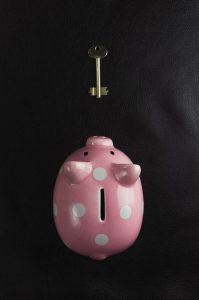Forex trading is the buying and selling of currencies with the aim of making a profit. The currency market is the largest and most liquid financial market in the world, with an estimated daily turnover of $5.3 trillion. One of the key factors that determine the profitability of forex trading is the volatility of the currency pairs being traded. In this article, we will explore how much forex currencies move on average.
The volatility of a currency pair refers to the degree of fluctuation in its price over a given period. The more volatile a currency pair is, the more likely it is to experience sudden price movements. Volatility is usually measured using standard deviation, which is a statistical measure of the spread of a set of data from its mean.
The average daily range (ADR) is another commonly used measure of currency pair volatility. ADR is the average number of pips (price movement) a currency pair moves in a day. Pips are the smallest unit of price movement in forex trading and are usually quoted to the fourth decimal place. For example, if the EUR/USD pair moves from 1.1200 to 1.1250, it has moved 50 pips.
The amount of currency movement varies from one currency pair to another, and it is influenced by various factors such as economic data releases, geopolitical events, central bank policy decisions, and market sentiment. Some currency pairs are more volatile than others, and traders need to take this into account when choosing which pairs to trade. Let’s look at some of the most traded currency pairs and their average daily ranges.
EUR/USD
The EUR/USD is the most traded currency pair in the world, accounting for about 28% of the total daily forex volume. It represents the exchange rate between the euro and the US dollar. The average daily range for this pair is around 80 pips, although it can go as high as 150 pips during volatile market conditions.
GBP/USD
The GBP/USD pair represents the exchange rate between the British pound and the US dollar. It is the third most traded currency pair, accounting for about 9% of the total daily forex volume. The average daily range for this pair is around 100 pips, although it can go as high as 200 pips during volatile market conditions.
USD/JPY
The USD/JPY pair represents the exchange rate between the US dollar and the Japanese yen. It is the second most traded currency pair, accounting for about 13% of the total daily forex volume. The average daily range for this pair is around 70 pips, although it can go as high as 120 pips during volatile market conditions.
USD/CHF
The USD/CHF pair represents the exchange rate between the US dollar and the Swiss franc. It is the fifth most traded currency pair, accounting for about 5% of the total daily forex volume. The average daily range for this pair is around 60 pips, although it can go as high as 100 pips during volatile market conditions.
AUD/USD
The AUD/USD pair represents the exchange rate between the Australian dollar and the US dollar. It is the fourth most traded currency pair, accounting for about 6% of the total daily forex volume. The average daily range for this pair is around 70 pips, although it can go as high as 120 pips during volatile market conditions.
Conclusion
The volatility of forex currencies varies from one pair to another and is influenced by various factors such as economic data releases, geopolitical events, central bank policy decisions, and market sentiment. Traders need to take into account the volatility of the currency pairs they are trading to manage their risk effectively. The average daily range is a useful measure of currency pair volatility, and traders can use it to set profit targets and stop-loss orders. Overall, forex trading requires a good understanding of the market and the factors that influence currency movements.






